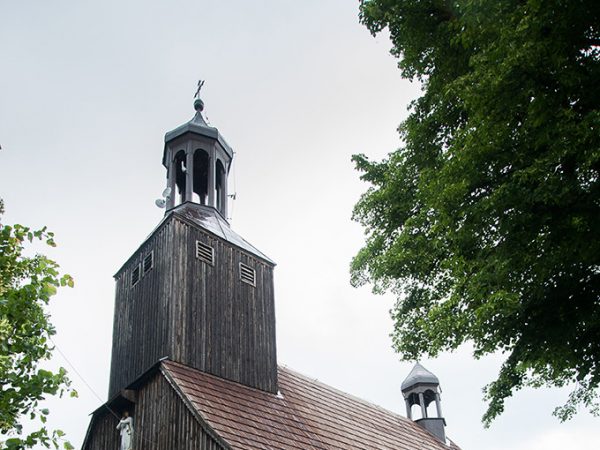Wooden monuments
Miraculous painting
Dated to around 1600 the image of the Blessed Virgin Mary in Żegocin was created in the style of Our Lady of the Snows. Originally it was dedicated to the parish of the village Łęg. It ended up in Żegocin in unusual circumstances. The legend has it that during one summer, just after the harvest, water level in the Prosna river rose so much that the river flooded. The flood destroyed a small church in Łęg. Its remains drifted towards Żegocin and with them – the painting of Madonna. When the picture got stranded, local people brought it carefully ashore and it was the last time when the bells of the village of Łęg rang…
The picture quickly became famous for giving grace. For years requests and pleas of many pilgrims were heard so in 1965 cardinal Stefan Wyszyński personally crowned the Madonna. There is a telling sign on the picture: Sancta Dei Genitrix ora pro nobis (“Pray for us, o holy Mother of God”).
A famous actress, Helena Modrzejewska, who was a guest at Józef Chłapowski’s household, prayed in front of the picture. This prominent actress, known for her Shakespearean roles, donated a precious necklace to the Blesseed Virgin Mary of Żegocin as a votive offering.
O the most holy Virgin of Żegocin’s painting Save us, save us from danger We put all our hopes in You Aid us Mother when we are to die.
A song sung during the unveiling and covering of the picture.
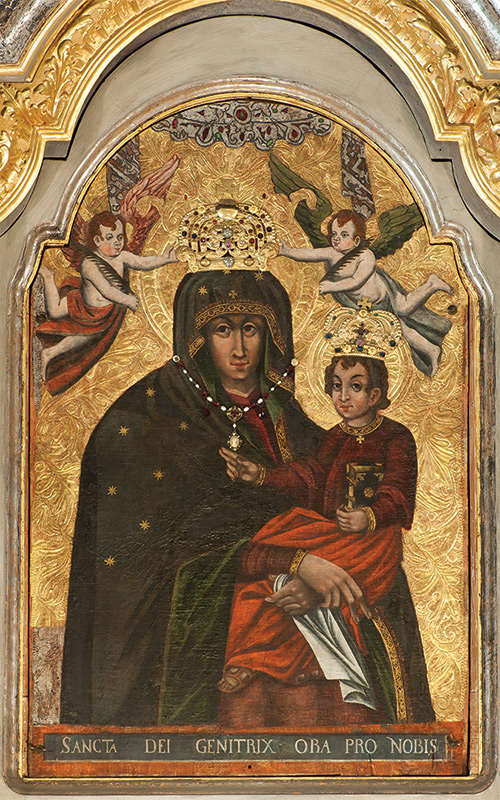
The noble set
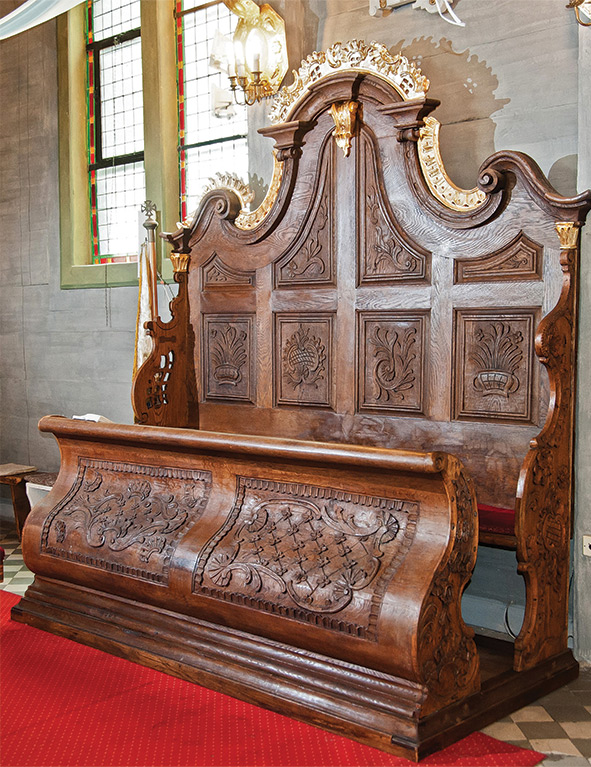

A confessional, a founder’s bench and benches were done in a local workshop by craftsmen from Greater Poland region in around 1776. During their experiments with wood material, those anonymous artists sculptured oak church ‘furniture’ into sophisticated shapes. They were decorated with fine ornaments, which required not only precision but also artistic sense.
- decoration know as rocaille
- so called volute scrollwork
The antique pieces of furniture were probably founded by the owners of Żegocin – for themselves and the rural community. Surely they must have obtained the sacrament of penance which was given in this black confessional. When the souls were purified from sins, the founders, finding themselves under God’s grace, could cross the ‘border’ below the rood beam and sit in a reserved bench.
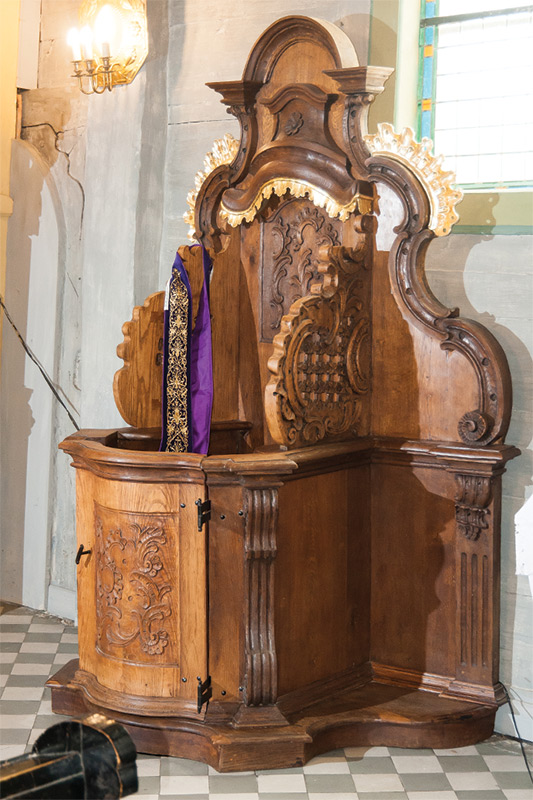
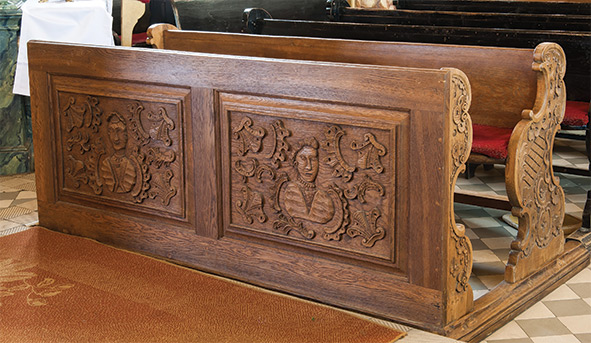

- On the benches there are two couples in folk costumes, a man and a woman in nobelman’s clothing and the emblems of John the Baptist (decapitated head of the saint in a bowl) and St. John of Nepomuk (the halo of stars, a padlock and a tongue).
Indulgences
15 sierpnia (Najświętszej Maryi Panny Wniebowziętej), ipsa die (Matki Kościoła), niedziela po 8 września (Narodzenia Najświętszej Maryi Panny) oraz II niedziela października (Matki Boskiej Różańcowej)





